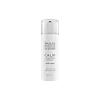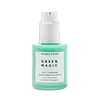What's inside
What's inside
 Key Ingredients
Key Ingredients

 Benefits
Benefits

 Concerns
Concerns

No concerns
 Ingredients Side-by-side
Ingredients Side-by-side

Water
Skin ConditioningGlycerin
HumectantHyaluronic Acid
HumectantBeta-Glucan
Skin ConditioningSea Whip Extract
Skin ConditioningSodium Hyaluronate
HumectantCeramide NP
Skin ConditioningCeramide AP
Skin ConditioningCeramide EOP
Skin ConditioningCholesterol
EmollientGlycyrrhiza Glabra Root Extract
BleachingEpilobium Angustifolium Flower/Leaf/Stem Extract
Skin ConditioningPhytosphingosine
Skin ConditioningSodium Cocoyl Amino Acids
CleansingChrysanthemum Parthenium Flower Extract
Skin ConditioningGlycine Soja Seed Extract
Skin ConditioningUbiquinone
AntioxidantSodium Lauroyl Lactylate
EmulsifyingCaprylic/Capric Triglyceride
MaskingMagnesium Aspartate
Skin ConditioningPotassium Aspartate
Skin ConditioningSarcosine
Skin ConditioningXanthan Gum
EmulsifyingCarbomer
Emulsion StabilisingPolysorbate 20
EmulsifyingPEG/PPG-14/4 Dimethicone
EmulsifyingDisodium EDTA
Ethylhexylglycerin
Skin ConditioningPhenoxyethanol
PreservativeWater, Glycerin, Hyaluronic Acid, Beta-Glucan, Sea Whip Extract, Sodium Hyaluronate, Ceramide NP, Ceramide AP, Ceramide EOP, Cholesterol, Glycyrrhiza Glabra Root Extract, Epilobium Angustifolium Flower/Leaf/Stem Extract, Phytosphingosine, Sodium Cocoyl Amino Acids, Chrysanthemum Parthenium Flower Extract, Glycine Soja Seed Extract, Ubiquinone, Sodium Lauroyl Lactylate, Caprylic/Capric Triglyceride, Magnesium Aspartate, Potassium Aspartate, Sarcosine, Xanthan Gum, Carbomer, Polysorbate 20, PEG/PPG-14/4 Dimethicone, Disodium EDTA, Ethylhexylglycerin, Phenoxyethanol
Water
Skin ConditioningPropanediol
SolventCaprylic/Capric Triglyceride
MaskingSimmondsia Chinensis Seed Oil
EmollientCoco-Caprylate/Caprate
EmollientCetyl Stearate
EmollientCentella Asiatica Leaf Extract
Skin ConditioningRosmarinus Officinalis Leaf Oil
MaskingPCA
HumectantGlycine
BufferingAlanine
MaskingSerine
MaskingArginine
MaskingGlutamic Acid
HumectantLysine Hcl
Skin ConditioningThreonine
Sodium PCA
HumectantSodium Lactate
BufferingProline
Skin ConditioningBetaine
HumectantCeramide NP
Skin ConditioningCeramide AP
Skin ConditioningGlycosphingolipids
EmollientTetraacetylphytosphingosine
Skin ConditioningCholesterol
EmollientPinus Cembra Wood Extract
Skin ConditioningPhaeodactylum Tricornutum Extract
HumectantAllantoin
Skin ConditioningHydrogenated Lecithin
EmulsifyingSalvia Hispanica Seed Oil
MoisturisingCannabis Sativa Seed Oil
EmollientBorago Officinalis Seed Oil
EmollientEucalyptus Globulus Leaf Oil
PerfumingSqualane
EmollientCetearyl Alcohol
EmollientCoco-Glucoside
Cleansing1,2-Hexanediol
Skin ConditioningPolyacrylate Crosspolymer-6
Emulsion StabilisingMelia Azadirachta Leaf Extract
Skin ConditioningC9-12 Alkane
SolventTrisodium Ethylenediamine Disuccinate
Caprylhydroxamic Acid
Tocopheryl Acetate
AntioxidantMelia Azadirachta Flower Extract
Skin ConditioningAloe Barbadensis Leaf Juice
Skin ConditioningHyaluronic Acid
HumectantLinoleic Acid
CleansingLinolenic Acid
CleansingLecithin
EmollientGlycerin
HumectantPhenoxyethanol
PreservativeGlyceryl Stearate
EmollientSodium Ascorbate
AntioxidantStearic Acid
CleansingTocopherol
AntioxidantPentylene Glycol
Skin ConditioningXanthan Gum
EmulsifyingAlcohol
AntimicrobialWater, Propanediol, Caprylic/Capric Triglyceride, Simmondsia Chinensis Seed Oil, Coco-Caprylate/Caprate, Cetyl Stearate, Centella Asiatica Leaf Extract, Rosmarinus Officinalis Leaf Oil, PCA, Glycine, Alanine, Serine, Arginine, Glutamic Acid, Lysine Hcl, Threonine, Sodium PCA, Sodium Lactate, Proline, Betaine, Ceramide NP, Ceramide AP, Glycosphingolipids, Tetraacetylphytosphingosine, Cholesterol, Pinus Cembra Wood Extract, Phaeodactylum Tricornutum Extract, Allantoin, Hydrogenated Lecithin, Salvia Hispanica Seed Oil, Cannabis Sativa Seed Oil, Borago Officinalis Seed Oil, Eucalyptus Globulus Leaf Oil, Squalane, Cetearyl Alcohol, Coco-Glucoside, 1,2-Hexanediol, Polyacrylate Crosspolymer-6, Melia Azadirachta Leaf Extract, C9-12 Alkane, Trisodium Ethylenediamine Disuccinate, Caprylhydroxamic Acid, Tocopheryl Acetate, Melia Azadirachta Flower Extract, Aloe Barbadensis Leaf Juice, Hyaluronic Acid, Linoleic Acid, Linolenic Acid, Lecithin, Glycerin, Phenoxyethanol, Glyceryl Stearate, Sodium Ascorbate, Stearic Acid, Tocopherol, Pentylene Glycol, Xanthan Gum, Alcohol
 Reviews
Reviews

Ingredients Explained
These ingredients are found in both products.
Ingredients higher up in an ingredient list are typically present in a larger amount.
This ingredient is an emollient, solvent, and texture enhancer. It is considered a skin-softener by helping the skin prevent moisture loss.
It helps thicken a product's formula and makes it easier to spread by dissolving clumping compounds.
Caprylic Triglyceride is made by combining glycerin with coconut oil, forming a clear liquid.
While there is an assumption Caprylic Triglyceride can clog pores due to it being derived from coconut oil, there is no research supporting this.
Learn more about Caprylic/Capric TriglycerideCeramide AP is formally known as Ceramide 6.
Ceramides are intercellular lipids naturally found in our skin that bonds dead skin cells together to create a barrier. Having a strong skin barrier leads to more firm and hydrated skin.
They are known for their ability to hold water and thus are a great ingredient for dry skin. By bolstering the skin ceramides act as a barrier against irritating ingredients. This can help with inflammation as well.
If you would like to eat ceramides, sweet potatoes contain a small amount.
Read more about other common types of ceramides here:
Ceramide NP
Ceramide EOP
Ceramide NP is a type of ceramide and formally known as ceramide 3.
Ceramides are intercellular lipids naturally found in our skin that bonds dead skin cells together to create a barrier. They are known for their ability to hold water and thus are a great ingredient for dry skin.
Ceramides are an important building block for our skin barrier. A stronger barrier helps the skin look more firm and hydrated. By bolstering the skin ceramides act as a barrier against irritating ingredients. This can help with inflammation as well.
If you would like to eat ceramides, sweet potatoes contain a small amount.
Read more about other common types of ceramides here:
Ceramide AP
Ceramide EOP
Cholesterol is a class of organic molecules called lipids. It helps hydrate your skin and is essential to having a healthy skin barrier.
Our skin naturally contains cholesterol in the outermost layer. Besides cholesterol, it also contains ceramides and fatty acids. Cholesterol makes up about 1/4 of your skin's outer layer and barrier. Your skin barrier is responsible for keeping allergens and microbes out. Having a healthy skin barrier is also responsible for keeping your skin firm and plump.
Our bodies use cholestrol to create vitamin D, steroid hormones, and more.
Learn more about CholesterolGlycerin is already naturally found in your skin. It helps moisturize and protect your skin.
A study from 2016 found glycerin to be more effective as a humectant than AHAs and hyaluronic acid.
As a humectant, it helps the skin stay hydrated by pulling moisture to your skin. The low molecular weight of glycerin allows it to pull moisture into the deeper layers of your skin.
Hydrated skin improves your skin barrier; Your skin barrier helps protect against irritants and bacteria.
Glycerin has also been found to have antimicrobial and antiviral properties. Due to these properties, glycerin is often used in wound and burn treatments.
In cosmetics, glycerin is usually derived from plants such as soybean or palm. However, it can also be sourced from animals, such as tallow or animal fat.
This ingredient is organic, colorless, odorless, and non-toxic.
Glycerin is the name for this ingredient in American English. British English uses Glycerol/Glycerine.
Learn more about GlycerinHyaluronic acid is naturally found in healthy skin. It is a humectant, meaning it draws moisture to your skin.
This ingredient helps hydrate, soothe, and protect the skin.
What makes hyaluronic acid so hydrating? It has the capacity to bind or hold large amounts of water.
Fun fact: It is already naturally found in our bodies, such as the fluids of our eyes and our joints.
Studies find this ingredient to have anti-inflammatory and anti-microbial properties. This can help speed up wound-healing.
Hyaluronic acid can be irritating if the molecule has a low-molecular weight, or if the molecules are small.
One study found low-molecular weight hyaluronic acid to be pro-inflammatory, meaning some people may experience irritation. This is because our bodies use hyaluronic acid in the wound-healing process to signal to our bodies, via irritation, that something needs healing.
The same study found high-molecular weight hyaluronic acid to be anti-inflammatory.
These are some other common types of Hyaluronic Acid:
Learn more about Hyaluronic AcidPhenoxyethanol is a preservative that has germicide, antimicrobial, and aromatic properties. Studies show that phenoxyethanol can prevent microbial growth. By itself, it has a scent that is similar to that of a rose.
It's often used in formulations along with Caprylyl Glycol to preserve the shelf life of products.
Water. It's the most common cosmetic ingredient of all. You'll usually see it at the top of ingredient lists, meaning that it makes up the largest part of the product.
So why is it so popular? Water most often acts as a solvent - this means that it helps dissolve other ingredients into the formulation.
You'll also recognize water as that liquid we all need to stay alive. If you see this, drink a glass of water. Stay hydrated!
Learn more about WaterXanthan gum is used as a stabilizer and thickener within cosmetic products. It helps give products a sticky, thick feeling - preventing them from being too runny.
On the technical side of things, xanthan gum is a polysaccharide - a combination consisting of multiple sugar molecules bonded together.
Xanthan gum is a pretty common and great ingredient. It is a natural, non-toxic, non-irritating ingredient that is also commonly used in food products.
Learn more about Xanthan Gum